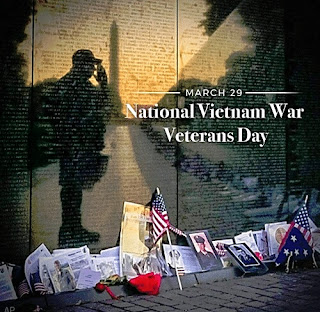The drive-in movie craze peaked in 1958. As twilight fell on those Summer evenings, over 5,000 outdoor screens were flickering to life in fields from Maine to Monterey, attracting millions of movie-goers. Most of those theaters are now gone. A few remain. An even smaller number are still in operation.
Another factor behind the wild success of drive-ins was the equally successful automobile industry. During World War II, America’s auto production had been shut down. With the end of the war, Americans were eagerly looking forward to buying new cars. The first postwar year’s figures were promising: nearly 70,000 cars were sold. The next year, though, sales shot up to 2,000,000. In 1955 Americans bought nearly 8 million automobiles.
They were not cheap, but they were affordable in the new economy, and gas was less than 20 cents per gallon. Moreover, the new automobiles were luxurious by the standards of most 1930s sedans. The front seat of your car was roomier and more comfortable than most theater seats, and more private.
Six years after this article appeared, the Post took another look at the still growing popularity of drive-ins.
“By 1956, Box Office, the trade magazine that styles itself ‘the pulse of the motion-picture industry,’ reported that there were more than 5,000 of the drive-in movies in the United States and Canada. Last year, when only a dozen or so new conventional theaters were opened in the entire country, 389 new drive-ins were launched at a cost of $79,880,000 according to the Box Officesurvey.
“As the older picture houses are abandoned, few are being replaced because it costs $500 per seat [in 1956 dollars] to replace them, and only half that much to provide space for the bring-your-own-seats of the drive-in movie patrons, who, incidentally, spend as much for food and soft drinks at the concession stand as they do for entrance tickets.”
Drive-in owners developed new attractions to build their attendance numbers. They built children’s play areas with swings, slides, and pony rides. Some built miniature railroads in which children could ride. More prosperous operations offered picnic grounds, swimming pools, and even a “monkey village.”
“While the youngsters disport themselves as these elaborate plants, their parents can have a go at miniature golf courses and driving ranges or they can play shuffleboard, pitch horseshoes and dance before live bands … One chain … holds auctions before show time and invites patrons to bring in anything they want sold; another runs bingo games based on speedometer mileage, and a third has a charge-account system open to anyone with means of identification at the gate.
“Several Texas drive-ins … operate laundries as a side line. The housewife, who might otherwise be spending the evening at home with the washing machine, drops her washing at the gate as the family enters the drive-in, and picks it up freshly laundered as she leaves – for a small consideration, of course. Some drive-ins offer warmed milk for babies, and fresh diapers, if their infant patrons forget to bring along a spare pair of pants. Others maintain nurseries and playgrounds for small fry, driving ranges for bored dads, open-air dance floors for teen-agers.”
As fads go, the drive-in went, though it lasted longer than anyone expected. Attendance declined gradually, and the number of theaters slowly began disappearing from the countryside in the 1960s. The automobile culture faded as America became weary of spending to much time inside a car. As the average American spent more time behind the wheel, driving to work or to stores, the joy of the open road was surpassed by the thrill of finding a good parking spot.
Several hundred drive-ins are still in operation, though, so it’s not too late to enjoy the experience of watching the stars under the stars. In addition, several cities across the country present outdoor cinema during their summer festivals. And in Plymouth, Michigan, the vast parking lot outside the Compuware Sports Arena is turned into a drive-in with a hydraulically raised screen, a projector housed inside a truck, and the soundtrack broadcast to car radios.
Today, drive-in movies seem like the essence of American entertainment in the 1950s. However, they date back to the Great Depression. The first drive-in opened for business near Camden, New Jersey, 66 years ago this week (June 6).
Drive-ins proved popular enough to stay alive and inspire a few imitators. Over the next 16 years, hopeful businessmen built about 100 drive-ins in the United States. But outdoor movie theaters remained just another novelty trying to coax money out of the pockets of Depression America.
It was the postwar society, and its booming economy, that launched the rise of drive-in theaters — also called “ozoners” for their open-air atmosphere. Americans were at a loss to explain the explosive growth of drive-in theaters. As a Post writer observed in a 1950 article:
“Most conventional theater owners, who despise the ozoners and battle them at every turn, say the thing is a fad, that it’s going too fast, and, anyway, the places are no more than parking lots for petters. Variety, the bible of show business, calls them “passion pits with pix.” Needless to say, there are no figures on petting frequency in drive-ins, but I can offer the result of a one-man nonsnooping survey made by myself. I talked with dozens of exhibitors, and all firmly state that no more went on in the cars than in the rear seats of the conventional theaters.
“According to one drive-in manager, ‘Sure, a fellow slips his arm around his girl in the drive-ins,’ he said. ‘The same as in the regular theaters or on a park bench. No more than that. And there’s one thing you don’t get in the drive-ins that you get inside. That’s the guy on the prowl, the seat changer who molests lone women. There’s none of that in the drive-ins.’
“But what disproves the [romantic reputation] more than anything else is the type of audience that fills the drive-ins today. It is by far a familiar audience, with a probable 75 percent of the cars containing children who, incidentally, are let in free by most drive-ins if they are under twelve. This is the main reason the ozoners have been so successful — their appeal to the family group. They are the answer to parents who want to take in the movies, but can’t leave their children alone at home. No baby-sitters are needed. And the kids are no bother to anyone in the audience. There’s no vaulting of theater seats, running up and down the aisles or drowning out the dialogue by yapping.
“The ozoners have struck a rich vein of new fans. Leading the list are the moderate-income families who bring the kids to save money on baby-sitters. Furthermore, they don’t have to dress up, find a parking place, walk a few blocks to a ticket booth, and then stand in line. The drive-ins make it easy for them and for workers and farmers, who can come in their working clothes straight from the evening’s chores, and for the aged and physically handicapped. They are a boon to the hard of hearing and to invalids, many of whom never saw a movie before the drive-ins. They draw fat men who have trouble wedging themselves between the arms of theater seats, and tall men sensitive about blocking off the screen from those behind. Add the teen-agers to these people, and you have a weekly attendance of about 7,000,000, an impressive share of the country’s 60,000,000 weekly ticket buyers.”
Another factor behind the wild success of drive-ins was the equally successful automobile industry. During World War II, America’s auto production had been shut down. With the end of the war, Americans were eagerly looking forward to buying new cars. The first postwar year’s figures were promising: nearly 70,000 cars were sold. The next year, though, sales shot up to 2,000,000. In 1955 Americans bought nearly 8 million automobiles.
They were not cheap, but they were affordable in the new economy, and gas was less than 20 cents per gallon. Moreover, the new automobiles were luxurious by the standards of most 1930s sedans. The front seat of your car was roomier and more comfortable than most theater seats, and more private.
Six years after this article appeared, the Post took another look at the still growing popularity of drive-ins.
“By 1956, Box Office, the trade magazine that styles itself ‘the pulse of the motion-picture industry,’ reported that there were more than 5,000 of the drive-in movies in the United States and Canada. Last year, when only a dozen or so new conventional theaters were opened in the entire country, 389 new drive-ins were launched at a cost of $79,880,000 according to the Box Officesurvey.
“As the older picture houses are abandoned, few are being replaced because it costs $500 per seat [in 1956 dollars] to replace them, and only half that much to provide space for the bring-your-own-seats of the drive-in movie patrons, who, incidentally, spend as much for food and soft drinks at the concession stand as they do for entrance tickets.”
Drive-in owners developed new attractions to build their attendance numbers. They built children’s play areas with swings, slides, and pony rides. Some built miniature railroads in which children could ride. More prosperous operations offered picnic grounds, swimming pools, and even a “monkey village.”
“While the youngsters disport themselves as these elaborate plants, their parents can have a go at miniature golf courses and driving ranges or they can play shuffleboard, pitch horseshoes and dance before live bands … One chain … holds auctions before show time and invites patrons to bring in anything they want sold; another runs bingo games based on speedometer mileage, and a third has a charge-account system open to anyone with means of identification at the gate.
“Several Texas drive-ins … operate laundries as a side line. The housewife, who might otherwise be spending the evening at home with the washing machine, drops her washing at the gate as the family enters the drive-in, and picks it up freshly laundered as she leaves – for a small consideration, of course. Some drive-ins offer warmed milk for babies, and fresh diapers, if their infant patrons forget to bring along a spare pair of pants. Others maintain nurseries and playgrounds for small fry, driving ranges for bored dads, open-air dance floors for teen-agers.”
As fads go, the drive-in went, though it lasted longer than anyone expected. Attendance declined gradually, and the number of theaters slowly began disappearing from the countryside in the 1960s. The automobile culture faded as America became weary of spending to much time inside a car. As the average American spent more time behind the wheel, driving to work or to stores, the joy of the open road was surpassed by the thrill of finding a good parking spot.
Several hundred drive-ins are still in operation, though, so it’s not too late to enjoy the experience of watching the stars under the stars. In addition, several cities across the country present outdoor cinema during their summer festivals. And in Plymouth, Michigan, the vast parking lot outside the Compuware Sports Arena is turned into a drive-in with a hydraulically raised screen, a projector housed inside a truck, and the soundtrack broadcast to car radios.
You can find the drive-in closest to you online at driveinmovie.com and drive-ins.com.
Source: https://www.saturdayeveningpost.com/2009/05/america-drive-in-movies/














